So consider the following image of an array of objects where its date: array
It's clear to see that this array is out of order, there are tons of examples of sorting an array of objects where there is a date key with a value of the date. But there seem to be no example wheres I can sort this array of objects where the key of the object is the date.
Ideas?
This answer is the closest answer I could find but again my date, as you can see if the key of the object.
